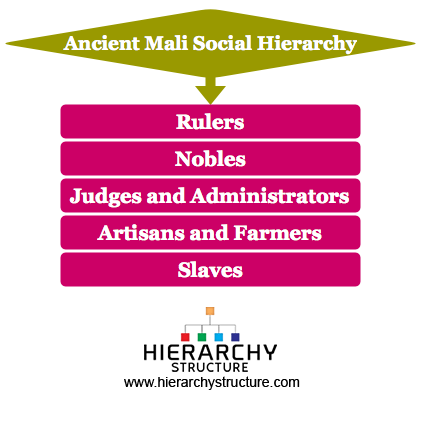The Mali Empire was an ancient empire in West Africa between c.1230 to c.1600. The culture,language and customs of this empire were greatly influenced by the culture of Western African cities and the people were divided into sects or sections based on their social standing.
This social segregation of the empire was much like the caste system in which there was a king as the supreme power and the classes kept decreasing leading down to the slaves who were merely in control of their own lives. To understand this social hierarchy of ancient Mali, you can read the following given information.
Rulers
At the top of the hierarchy came the rulers or kings who held the maximum power and respect in the empire. They were sometimes also called as Mansa or emperor and were prosperous and important. They owned land, wealth and knowledge. The rulers were the top class and all the other classes of individuals in the ancient MaliEmpire came under them.
Nobles
Like all other ancient empires, even the ancient MaliEmpire had a group of the noble class which consisted of wealthy, learned and respected individuals who were involved in some business or the other. They were traders, merchants and other respected people who studied a lot and gained a lot of knowledge of the trade.
Judges and Administrators
After the noble class came the class or level of the judges, administrators and other government service men. These individuals made sure that the law and order was in place and that everything in the empire ran smoothly. They were not as rich as nobles but were respected.
Artisans and Farmers
The class of the artisans and farmers came after the judges and administrators and these individuals were the lower middle class of the ancient Mali times. They were either involved in creating objects and selling them or in agriculture. Their economic status was not very powerful.
Slaves
At the bottom of the pyramid was the class that consisted of the slaves. The slaves had no right over their own lives from birth and were bought by nobles or judges etc. Sometimes slaves were freed by their owners and worked hard to climb up the social ladder but this was rare. They were allowed to buy their own freedom and after serving for many years, sometimes they were pardoned or freed according to the wishes of the masters.
This is the structure of Ancient Mali Social Hierarchy. Also, know about African Social Hierarchy.

